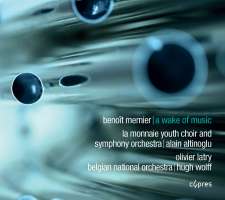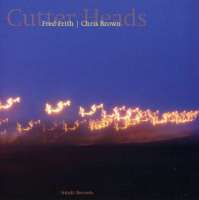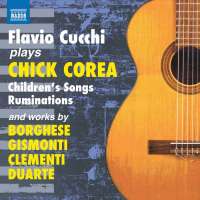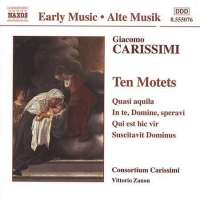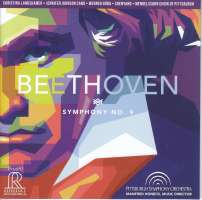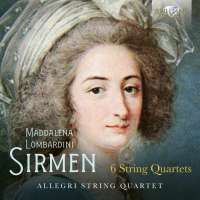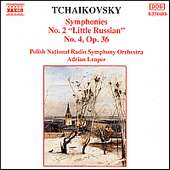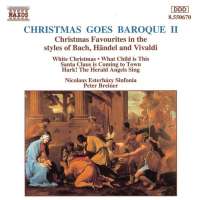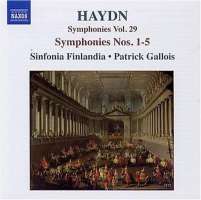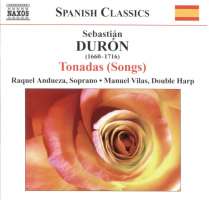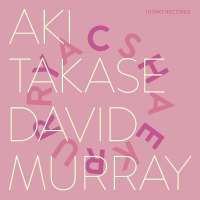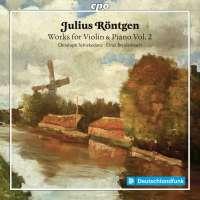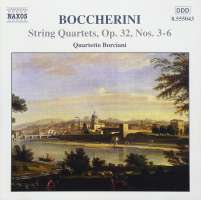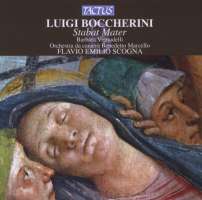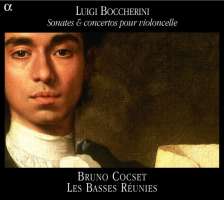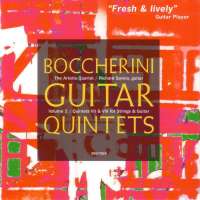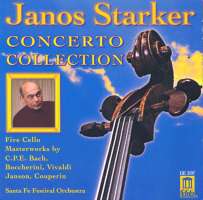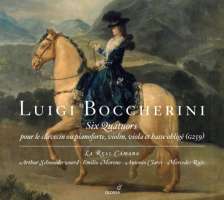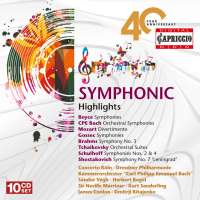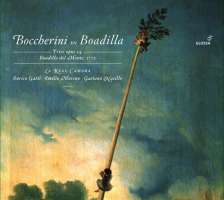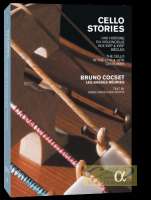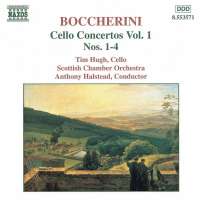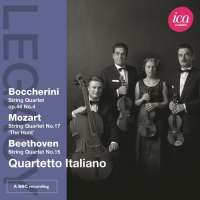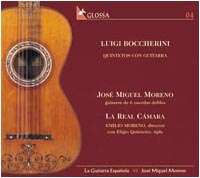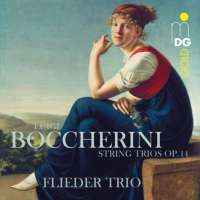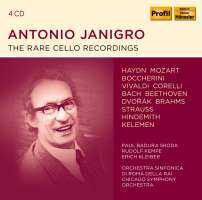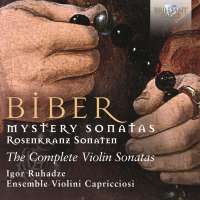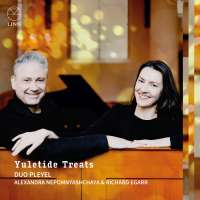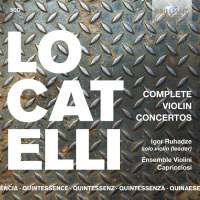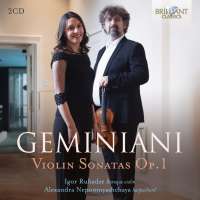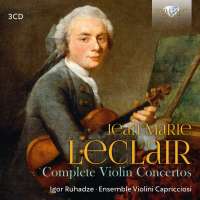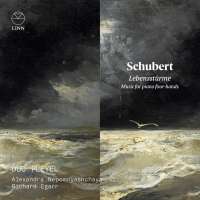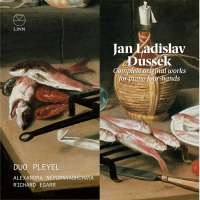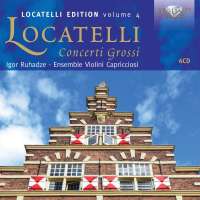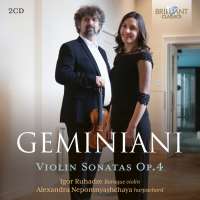
kompozytor
Boccherini, Luigi
tytuł
Boccherini: Complete Violin Sonatas, Vol. 1
wykonawcy
Ruhadze, Igor;
Nepomnyashchaya, Alexandra;
Ensemble Violini Capricciosi
Nepomnyashchaya, Alexandra;
Ensemble Violini Capricciosi
nr katalogowy
96612
opis
Luigi Boccherini was born in the Italian city of Lucca in Tuscany, on 19 February 1743, the son of Leopoldo Boccherini, a cellist and double-bass player. The young Luigi received his first music lessons from his father and at the Seminario di San Giovanni in Lucca. The cello was to become his instrument. At the age of ten, he was apparently already so advanced that his father sent him to Rome for further studies at the end of 1753, where he possibly remained until 1756. Apart from a brief period in Vienna around 1760, he was in Lucca until he set out to Paris (perhaps the major musical centre of the time) in the spring of 1768. Later that year he would go to Spain, where he would remain for the rest of his life until his death on 28 May 1805.
•Luigi Boccherini: Sonata No. 1 in B-Flat Major, G.25: II. Adagio
•Luigi Boccherini: Sonata No. 1 in B-Flat Major, G.25: III. Presto
•Luigi Boccherini: Sonata No. 4 in D Major, G.28: I. Andante
•Luigi Boccherini: Sonata No. 4 in D Major, G.28: II. Allegro assai
•Luigi Boccherini: Sonata No. 4 in D Major, G.28: III. Rondo
•Luigi Boccherini: Sonata No. 5 in G Minor, G.29: I. Allegro molto
•Luigi Boccherini: Sonata No. 5 in G Minor, G.29: II. Cantabile, ma con un poco di moto
•Luigi Boccherini: Sonata No. 5 in G Minor, G.29: III. Presto assai
•Disk 2
•Luigi Boccherini: Sonata No. 2 in C Major, G.26: I. Allegro con spirito
•Luigi Boccherini: Sonata No. 2 in C Major, G.26: II. Largo
•Luigi Boccherini: Sonata No. 2 in C Major, G.26: III. Tempo di minuetto
•Luigi Boccherini: Sonata No. 3 in B-Flat Major, G.27: I. Moderato
•Luigi Boccherini: Sonata No. 3 in B-Flat Major, G.27: II. Allegro
•Luigi Boccherini: Sonata No. 6 in E-Flat Major, G.30: I. Maestoso assai
•Luigi Boccherini: Sonata No. 6 in E-Flat Major, G.30: II. Rondo Allegretto ma con moto
•Luigi Boccherini: Sonata No. 1 in C Minor, G.46: I. Allegro
•Luigi Boccherini: Sonata No. 1 in C Minor, G.46: II. Menuetto
•Luigi Boccherini: Sonata No. 1 in C Minor, G.46: III. Presto
Composers from the first half of the eighteenth century typically cast their violin music in the form of a sonata for violin and basso continuo: the violin performing the solo role, the continuo the accompaniment. The continuo was realized most often by a harpsichord and a cello, either together or by just one of them. Later in the century continuo practice as an accompaniment gradually disappeared, and was replaced by another model: the sonata for keyboard with violin accompaniment. In such a sonata, the role of the violin was secondary to the keyboard part, but there are numerous examples with quite interesting violin parts (Mozart!).
In Boccherini’s violin sonatas the keyboard style is highly idiomatic, with scales, triads, broken octaves, complementary rhythms, whereas the violin serves as the accompaniment of the keyboard.
Igor Ruhadze’s Brilliant Classics recording of sonatas by Locatelli (94736) won warm praise from Gramophone. ‘The playing is elegantly supple, the string tone warm, and the architecture of individual movements thoughtfully worked out. All this makes for a pleasant mood and enjoyable listening. The more exuberant pieces are brilliantly and at times breathtakingly performed.’ Fanfare extended an equally enthusiastic welcome to Ruhadze’s album of concertos by Jean-Marie Leclair (95290): ‘The playing… is really top-notch… the group’s robust sound belies its small numbers… it’s hard to argue with playing as good as this.’
On this recording Igor Ruhadze plays with Alexandra Nepomnyashchaya, fortepiano.
Works:
Disk 1
•Luigi Boccherini: Sonata No. 1 in B-Flat Major, G.25: II. Adagio
•Luigi Boccherini: Sonata No. 1 in B-Flat Major, G.25: III. Presto
•Luigi Boccherini: Sonata No. 4 in D Major, G.28: I. Andante
•Luigi Boccherini: Sonata No. 4 in D Major, G.28: II. Allegro assai
•Luigi Boccherini: Sonata No. 4 in D Major, G.28: III. Rondo
•Luigi Boccherini: Sonata No. 5 in G Minor, G.29: I. Allegro molto
•Luigi Boccherini: Sonata No. 5 in G Minor, G.29: II. Cantabile, ma con un poco di moto
•Luigi Boccherini: Sonata No. 5 in G Minor, G.29: III. Presto assai
•Disk 2
•Luigi Boccherini: Sonata No. 2 in C Major, G.26: I. Allegro con spirito
•Luigi Boccherini: Sonata No. 2 in C Major, G.26: II. Largo
•Luigi Boccherini: Sonata No. 2 in C Major, G.26: III. Tempo di minuetto
•Luigi Boccherini: Sonata No. 3 in B-Flat Major, G.27: I. Moderato
•Luigi Boccherini: Sonata No. 3 in B-Flat Major, G.27: II. Allegro
•Luigi Boccherini: Sonata No. 6 in E-Flat Major, G.30: I. Maestoso assai
•Luigi Boccherini: Sonata No. 6 in E-Flat Major, G.30: II. Rondo Allegretto ma con moto
•Luigi Boccherini: Sonata No. 1 in C Minor, G.46: I. Allegro
•Luigi Boccherini: Sonata No. 1 in C Minor, G.46: II. Menuetto
•Luigi Boccherini: Sonata No. 1 in C Minor, G.46: III. Presto
nośnik
CD
x 5
gatunek
Muzyka klasyczna
producent
Brilliant Classics
data wydania
05-04-2023
EAN / kod kreskowy
5028421966120

(Produkt nie został jeszcze oceniony)
cena 98,00 zł
lubProdukt dostepny w niewielkiej ilości.
Wysyłka w ciągu 3 dni roboczych
Darmowa wysyłka dla zamówień powyżej 300 zł!
Darmowy kurier dla zamówień powyżej 500 zł!
sprawdź koszty wysyłki
